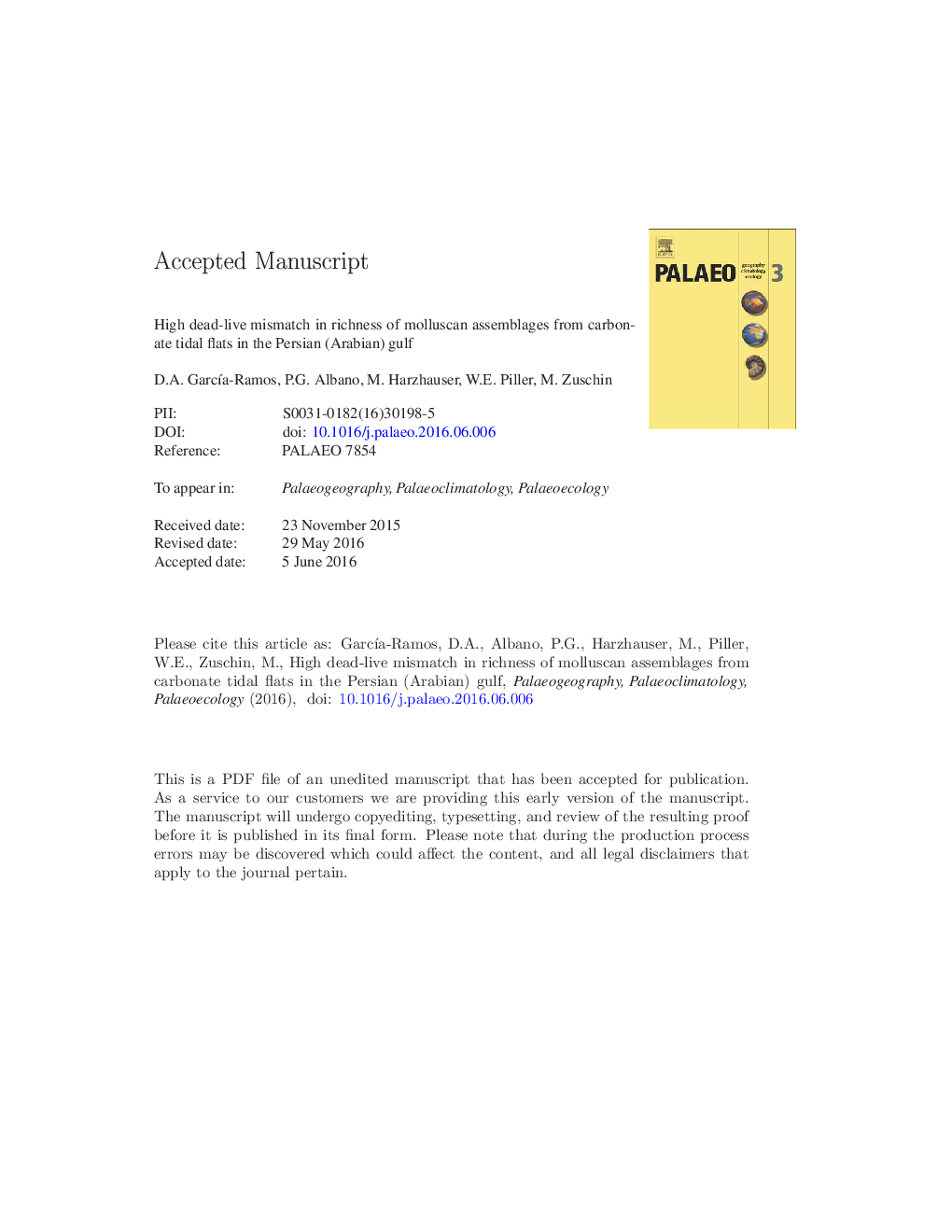| Article ID | Journal | Published Year | Pages | File Type |
|---|---|---|---|---|
| 6349159 | Palaeogeography, Palaeoclimatology, Palaeoecology | 2016 | 40 Pages |
Abstract
Live-dead (LD) fidelity studies are a fundamental tool for assessing the quality of the paleobiological information preserved in the fossil record. An important feature of death assemblages (DAs) is that they are time-averaged to some degree. Previous studies found that subtidal carbonate environments are characterized by lower time-averaging in comparison to siliciclastic settings, primarily because of a high rate of shell loss due to bioerosion and dissolution. These factors lead to increased temporal resolution in subtidal carbonate death assemblages (DAs) but more intense bias in species composition due to differential loss of vulnerable shells. A consequence of lower time-averaging is a better match in live-dead (LD) richness. We evaluated LD fidelity of molluscan assemblages from soft sediments in subtropical, carbonate tidal flats along the coast of the United Arab Emirates (Persian (Arabian) Gulf) to test these predictions. A total of 7193 mollusks from six sites were analyzed. We found that DAs are, on average, over five times richer than living assemblages (LAs) at site scale, and nearly five times at habitat scale. We found that early cementation, lateral mixing, intense bioturbation and moderate sedimentation rates can account for large LD differences in richness. Differential intensity in lateral mixing by post-mortem transport inflated alpha, beta, and gamma diversity by 28, 10 and 42%. However, beta diversity is strongly underestimated in DAs when compared to LAs. Evenness was larger in DAs both at site and at habitat scales, but there was only a high mismatch at sites with patchy LAs. Fidelity of feeding guild structure was high for rank abundance, with secondary consumers well represented in DAs. The occurrence of out-of-habitat taxa did not affect fidelity in rank-abundance of feeding guild structure. Our results suggest that time-averaging in carbonate tidal flats can potentially be higher compared with subtidal carbonate environments.
Related Topics
Physical Sciences and Engineering
Earth and Planetary Sciences
Earth-Surface Processes
Authors
D.A. GarcÃa-Ramos, P.G. Albano, M. Harzhauser, W.E. Piller, M. Zuschin,
